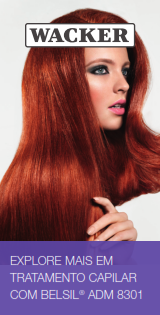Dispositivo simplificado monitora a pele sob a exposição solar
Categoria: Novas Tecnologias
After L’Oreal unveiled a wearable sun patch monitoring device at the beginning of the year, the race has heated up to develop an inexpensive and amenable device for all to use.
And a group of scientists working for the American Chemical Society believes they may have developed a simplified solution aimed at helping individuals stay safe by signalling when the danger of skin burning from UV exposures might occur.
The Researchers, led by J. Justin Gooding, have reported their findings in the ACS Sensors journal which focuses on a paper-based sensor monitoring sun exposure and determining when exposure is being exceeded based on skin tones and sunscreen levels.
Aim was to develop a simplified, safer UV sensor
The main reason behind the group of scientists tackling the research was the fact that most UV sensor devices, including L’Oreal’s sun patch, have been developed around technology that rely on smartphones for their operation.
Likewise, single-use, disposable patches have also come on the market, but some of these products have proved to be questionable because they contain substances that are known to be potentially dangerous to people or the environment.
As a consequence, Gooding and his colleagues set about to develop a disposable sunburn sensor that is inexpensive, composed of safe materials and can be easily calibrated according to different skin tones and the type of SPF sunscreens that are being applied to the skin.
Paper, titainium dioxide and food dye
The result is s sun-exposure sensor created from an inkjet printing titainium dioxide, a nontoxic and inexpensive compound that is often included in sunscreen formulations, combined with a food dye onto the paper.
Once a sufficient amount of UV radiation hits the sensor, the titanium dioxide causes the dye to change colour, which the scientists claim then causes the dye to change colour and give warning to people to get out of the sun or apply more sunscreen.
The scientists have tailored the sensor by adding UV neutral density filters that can speed up or slow down the discolouration time of the sensor according to skin tone and sunscreen type.
The ongoing research his being partly funded by the Australian Research Council Centres of Excellence.
Cosmetics Design-Europe, (01/06/2016)








